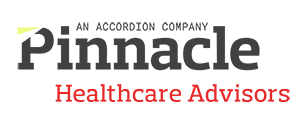Do you feel like you have too many reports? Do you feel like your teams measure the same things in different ways? Revenue Cycle reporting and analytic solutions can take many shapes and sizes in today’s healthcare industry. Some organizations leverage comprehensive reporting solutions that have the capability to provide self-service reporting and analytics tools while others rely on manually generated reports and queries from an IT group.
- What reports are being used to drive operations? – While a seemingly obvious question, it is easy to lose track of what reports are being generated and used over time. It is helpful for both operations and reporting resources to establish a dictionary that outlines what reports are being generated and key information such as frequency, time to create, and users. This can be a way to free up capacity within the reporting team for other initiatives if reports are no longer being used or similar reports are being used by different teams and can be consolidated.
- Do you have clear operational goals and metrics to measure performance team? – Once you have a clear understanding of what reports are being used and by whom, it is important to make sure a clear strategy is outlined and communicated. Identify the key metrics that drive your operations (AR days, cash, denial rates, productivity, workflow backlogs, etc.). Ensure clear goals are established and communicated to all team members. Establish regular time for your teams to report on their metrics compared to goal, review the key issues they have uncovered, and outline next steps to improving on the identified opportunities.
- Do you have a strategy to address ad hoc reporting needs in a timely manner? – Developing an effective reporting solution requires balancing core standardized reports with the ability to run ad-hoc reports to research underperforming metrics. Some solutions allow users to run reports and research their own questions. Others rely on key users or IT teams to run analysis to answer questions as they arise. The most important component is having a deliberate strategy and making sure the team leaders are trained and able to make evidence driven decisions.
- Do you have a pipeline for reporting enhancements? – Regardless of how savvy of a reporting solution a team uses, there will always be a need to improve reporting to align with operational objectives and answer new questions. When these needs require more technical intervention, it is important to have an established methodology to communicate and prioritize requests. Operations should be able to provide a clear business case on what is needed and why, which will help inform the priority, scope, and timeline required. The technical and operational decision makers should meet regularly to make sure the priorities align to provide the most impact to the organization.
Reporting requirements continually evolve as the team members, processes, and tools change over time. It is important to revisit these questions to ensure your teams have the most relevant data to make informed decisions that drive continuous improvement. For additional information on building an effective reporting solution that fits your organization’s needs, please contact Nick Fortman at nfortman@pinnaclehca.com.



